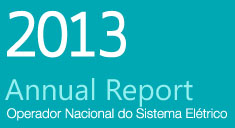Electrical Safety Improvement
The power systems are subjected constantly to failures caused by nature (lightning, fires, windstorms, rain, frost, etc.) or human actions (vandalism, design errors, operation errors, communication errors) and the intrinsic flaws to their own equipment comprising them. Regarding the type of disorder, there can be single or multiple contingencies.
The systems are designed for a reliability criterion n-1, ie they must be able to withstand any single contingency without interrupting supply. However, in real-time operation they are subject to contingencies involve the loss of two or more components. When the additional investment in reliability is less than the social and / or economic impact of a possible multiple supply failure it justifies the adoption of a more restrictive criterion of reliability. ONS has been working continuously in order to add additional security to the performance of BIPS, through various initiatives.
In order to minimize the chances of occurrence of a major disturbance, restricting the spread of a disturbance and accelerate the recovery of loads, it is necessary to maintain permanent observation, analysis, diagnosis and prevention of these events.
Given the combinatorial nature of the problem as well as the particularity of the events and the system configuration before and after the disorders, the analysis in post-operation of large disturbances provides important input for the establishment of preventive measures and enhanced security.
